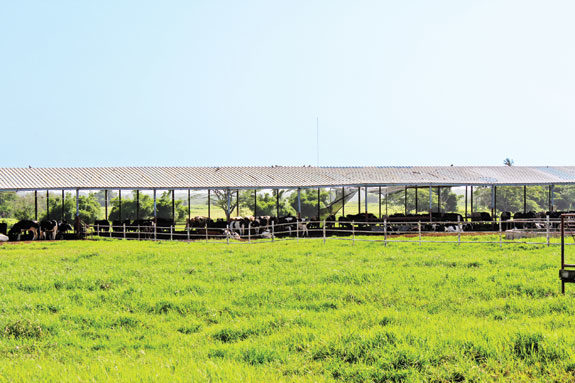If agriculture and Puerto Rico appear in the same sentence, most people would think of sugar cane, bananas or other tropical fruits. Yet, the dairy industry in Puerto Rico represents 25 percent of the island’s total agricultural-related income at more than $215 million dollars annually. Milk production is the single-biggest sector of Puerto Rico’s ag economy.
For hundreds of years, Puerto Rico stood as the main trading port for Spanish fleets loaded with the offerings of the surrounding islands, and not until recently did anyone look beyond these traditional island food staples as a means to feed the local population.
However, leading the way in a surge of dairy production is Q. Development, Inc., a dairy farm located in Arecibo on the northern side of the island.
Owned by Jose Lopez Caceres, Q. Development has become one of the largest operations in an area most people wouldn’t consider ideal for raising a dairy herd.
The farm sits on a patchwork of approximately 300 acres. Spread over these acres are 650 lactating cow, 250 dry cows, 500 calves and heifers and 32 bulls that are distributed among the milking and dry cows.
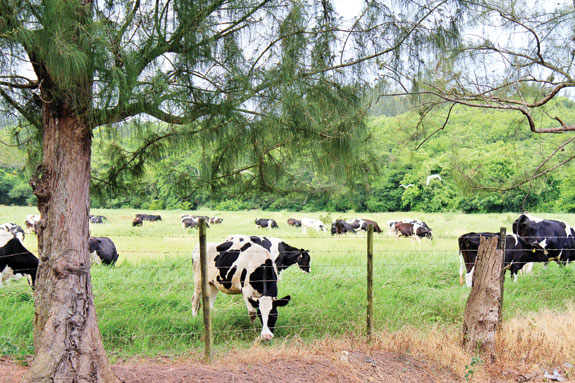
Twenty-five full-time employees are needed to keep the operation running smoothly.
A double-25 herringbone milking parlor sits at the heart of the dairy with one 25,000-liter tank and two 12,500-liter tanks ready to receive the milk.
On-site manager Israel Maldonado, who started working on the dairy as a young teen, now oversees the daily management and operation of the dairy and its related activities.
Cows on the dairy average 18.5 to 19 liters a day (52 pounds) and are typically in milk for 308 days. Calving intervals are typically 14 months, so the dry period tends to be slightly longer on the island than on the mainland U.S.
Overall herd health and a need to keep milk production within the quota assigned to the dairy by the territory are the main reasons for early dryoff of animals. Most cows go through three lactations before they are culled, resulting in the need to replace one-third of the herd each year.
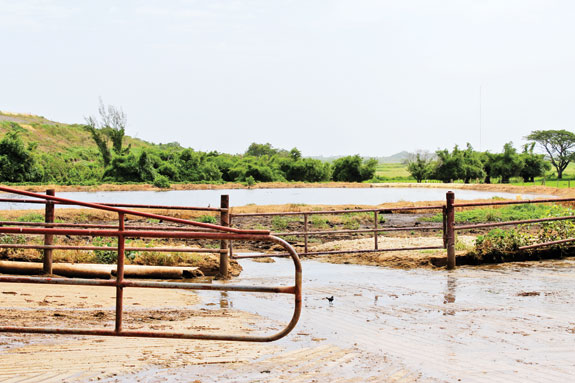
Cows on the dairy are treated with a typical A.I. protocol, but the continual warm temperatures have led Q. Development and other dairies to look at utilizing natural service to help fill in the gaps.
Karen Bebgoa, an extension specialist with the University of Puerto Rico , says several operations on the island have noticed that semen coming from Canada and the northern U.S. results in calves that really struggle to get going, especially during the rainy season.
“Currently, there is a push among some dairymen to utilize local genetics to breed animals that are more heat-tolerant. Many times, genetics from the U.S. and Canada are producing cows and calves that just can’t take the conditions of our local climate.
We are starting to see situations where more bulls are being used to cover herds, and those offspring are much more likely to survive the hot, humid climate and become productive animals in the herd.”
Although the heat and humidity lead to a variety of management issues, including mastitis and hoof-related ailments, Puerto Rico does offer one advantage most areas in the U.S. can’t take advantage of.
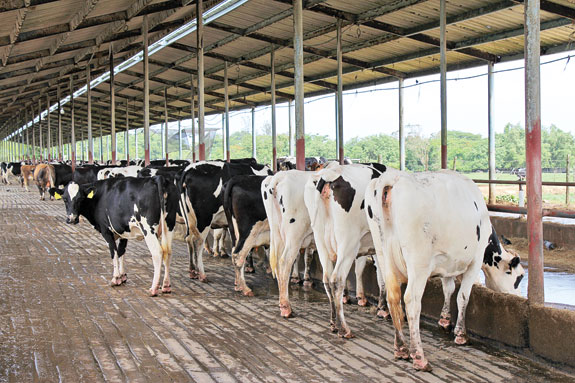
That advantage is a continual turnaround of pastures and greenchop forages all year long.
In order to take advantage of this constant feed source, Q. Development has moved in a different direction from traditional concentrate-feeding operations.
The dairy has developed a rotational set of paddocks surrounding the dairy parlor.
These paddocks are approximately 15 to 20 acres each, with around 150 animals grazing on each paddock at a time.
Cows are allowed to feed at a bunk that is supplied with greenchop grasses and a high-fiber, 18 percent protein pellet that is corn- and soybean-based.
To help supply the needed chewing and rumenal fiber, the cows are then released out in the paddocks to graze as needed. This grazing provides additional bulk fiber to the diet and gives the dairy a ready location to apply fertilizer from the lagoon during periods of heavy rain.
The paddocks are generally built with star grass as the main forage grown for animal grazing. Star grass propagates by using pieces of stem laid on the surface of the soil. These stolens run across the top of the ground in all directions, forming a mat of grass on the surface.
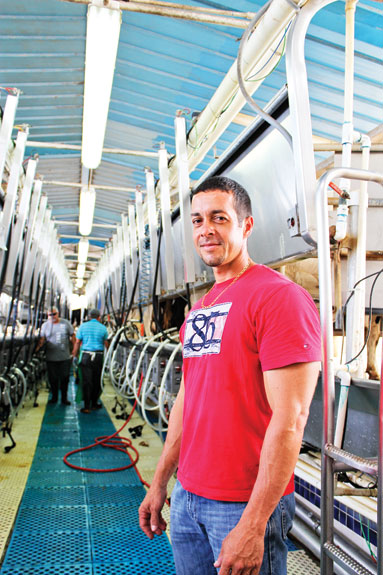
These pastures can be grazed for 25 to 30 days before a resting period of 21 days is needed for new stolen mats to form across the surface.
Since star grass has very little underground growth, manure dropped while grazing and pastures fertilized by sprinkling water from the lagoon respond very well to this treatment.
In most instances, no additional fertilizer is needed to keep pastures growing at a steady pace, making pasture management easy.
For those pastures not in the regular rotation, the grass is chopped every 30 to 35 days to provide a constant source of greenchop feed for both lactating and dry cows.
As with many of the dairies here in the U.S., operations in Puerto Rico must adhere to waste management specifications set up by the USDA-NRCS and the Environmental Quality board of Puerto Rico .
These plans require active participation in order to remain in compliance, as rain can create extensive runoff problems if the dairy isn’t ready to respond to rapidly changing conditions.
In most instances, the needs of the dairy can be met by fertilizing the pastures of star grass with trapped lagoon manure.
Few systems throughout the U.S. are able to keep a closed forage/fertilizer loop, but most dairies in Puerto Rico use a balance of plant and animal needs to keep nutrients well balanced and utilized.
Scroll down to view a photo slideshow with additional images. Click here to read a related article, "Got fresh milk? Puerto Rico strives to increase milk consumption."
Puerto Rico offers milk contracts based on a quota system. For dairies, it is imperative to stay within the quotas as milk sold above quota is paid back at 50 percent the standard rate (.60 per liter). With feed and other related costs, most producers would rather cull cows than overproduce.
Related to overproduction is the fact that most Puerto Ricans drink or use less than 7 ounces of milk a day. This is one fact that has the dairy industry on the island working together to increase awareness of the health benefits of drinking milk and using dairy products.
Even with its challenges, the dairy industry will continue to be an integral part of modern agriculture in Puerto Rico. PD
Olsen is a former Progressive Dairyman editor who is based in Jerome, Idaho.
PHOTOS:
PHOTO 1: Q. Development, Inc in Arecibo, Puerto Rico, has become one of the largest dairy operations on the island.
PHOTO 2: Dairy Cows at Q. Development, Inc.
PHOTO 3: Q. Development, Inc property.
PHOTO 4: Q. Development, Inc feed bunk.
PHOTO 5: On-site manager Israel Maldonado oversees the daily management of the dairy and its related activities. Photos courtesy of Darren Olsen.
